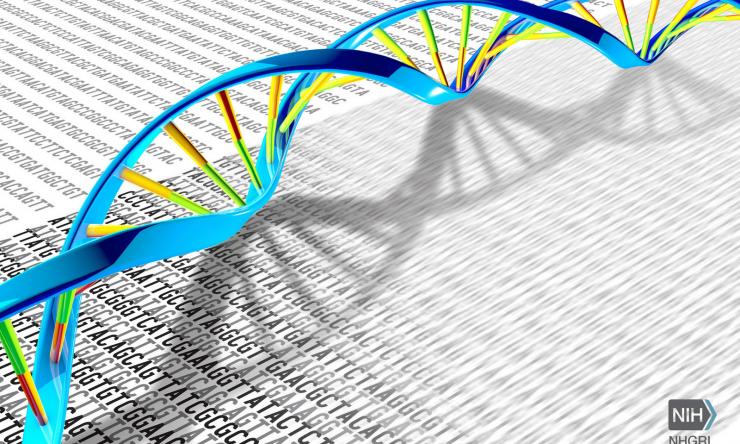Form of severe malnutrition linked to DNA modification
A group led by researchers at Baylor College of Medicine has identified significant differences at the epigenetic level – the chemical tags in DNA that help regulate gene expression – between two clinically distinct forms of acute childhood malnutrition known as edematous severe acute malnutrition (ESAM) and non-edematous SAM (NESAM).
The researchers report in the journal Nature Communications that ESAM, but not NESAM, is characterized by a reduction in methyl chemical tags in DNA and complex changes in gene activity, including both enhanced and reduced gene expression. Some of the genes that lost their methyl tags have been linked to other disorders of nutrition and metabolism, such as abnormal blood sugar and fatty liver disease, conditions that also have been observed in ESAM. The findings support consideration of methyl-group supplementation in ESAM.
What is ESAM and NESAM?
“Severe acute childhood malnutrition presents in two clinically distinct forms: ESAM and NESAM,” said corresponding author Dr. Neil Hanchard, assistant professor of molecular and human genetics and the USDA/ARS Children's Nutrition Research Center at Baylor. “ESAM is characterized by body swelling and extensive dysfunction of multiple organs, including liver, blood cells and the gut, as well as skin and hair abnormalities. NESAM, on the other hand, typically presents with weight loss and wasting.”
The differences between ESAM and NESAM are still not fully explained despite decades of studies addressing this question. In the current study, Hanchard and his colleagues looked to better understand the conditions by investigating whether there were differences at the molecular level, specifically on DNA methylation.
Linking DNA modifications to ESAM
“The decision to look at DNA methylation was partly driven by previous studies looking at biochemical markers in these individuals. In particular, the turnover of a particular amino acid called methionine,” said Hanchard.
Previous work has shown that methionine turnover is slower in ESAM than in NESAM. Methionine is a central ingredient of 1-carbon metabolism, a metabolic pathway that is key to DNA methylation. Lower methionine turnover suggested the possibility of alterations in DNA methylation.
“First, we conducted a genome-wide analysis of DNA methylation. When we found in children acutely ill with ESAM genes with levels of DNA methylation that were significantly different from those in NESAM patients, the levels were always lower. Of the genes analyzed, 161 showed a highly significant reduced level of methylation in ESAM, when compared to the same genes in NESAM,” Hanchard said.
Interestingly, a group of adults who had recovered from having ESAM malnutrition in their childhood did not show the same reduction in DNA methylation the researchers observed in childhood acute cases. This suggested that lower DNA methylation was probably related to acute ESAM.
Gene expression examined
Knowing that DNA methylation helps regulate gene expression, Hanchard and his colleagues next investigated whether there were differences in gene expression between ESAM and NESAM. They found that reduced overall methylation in ESAM resulted in a complex pattern of gene expression changes. For some genes, having reduced methylation enhanced their expression, while for others it reduced it.
Among the genes that were highly affected by reduced methylation were some of those related to conditions such as blood sugar regulation, fatty liver disease and other metabolic problems, which are also commonly seen more often in ESAM than NESAM.
“Our findings contribute to a better understanding of the molecular events that likely result in the differences between ESAM and NESAM,” Hanchard said. “Although we still don’t know why malnutrition leads to ESAM in some children, while it results in NESAM in others, our findings suggest that, once ESAM gets on its way, methylation changes are likely involved in the clinical signs and symptoms of the condition. There is also evidence that individual genetic variation also influences the level of DNA methylation. Furthermore, I am excited about the possibility that altering the molecular outcome of malnutrition with specific interventions could one day help alter the clinical outcome.”
Other contributors to this work include first author Katharina V. Schulze, Shanker Swaminathan, Sharon Howell, Aarti Jajoo, Natasha C. Lie, Orgen Brown, Roa Sadat, Nancy Hall, Liang Zhao, Kwesi Marshall, Thaddaeus May, Marvin E. Reid, Carolyn Taylor-Bryan, Xueqing Wang, John W. Belmont, Yongtao Guan, Mark J. Manary, Indi Trehan and Colin A. McKenzie.
See a complete list of author affiliations and financial support for this study.










